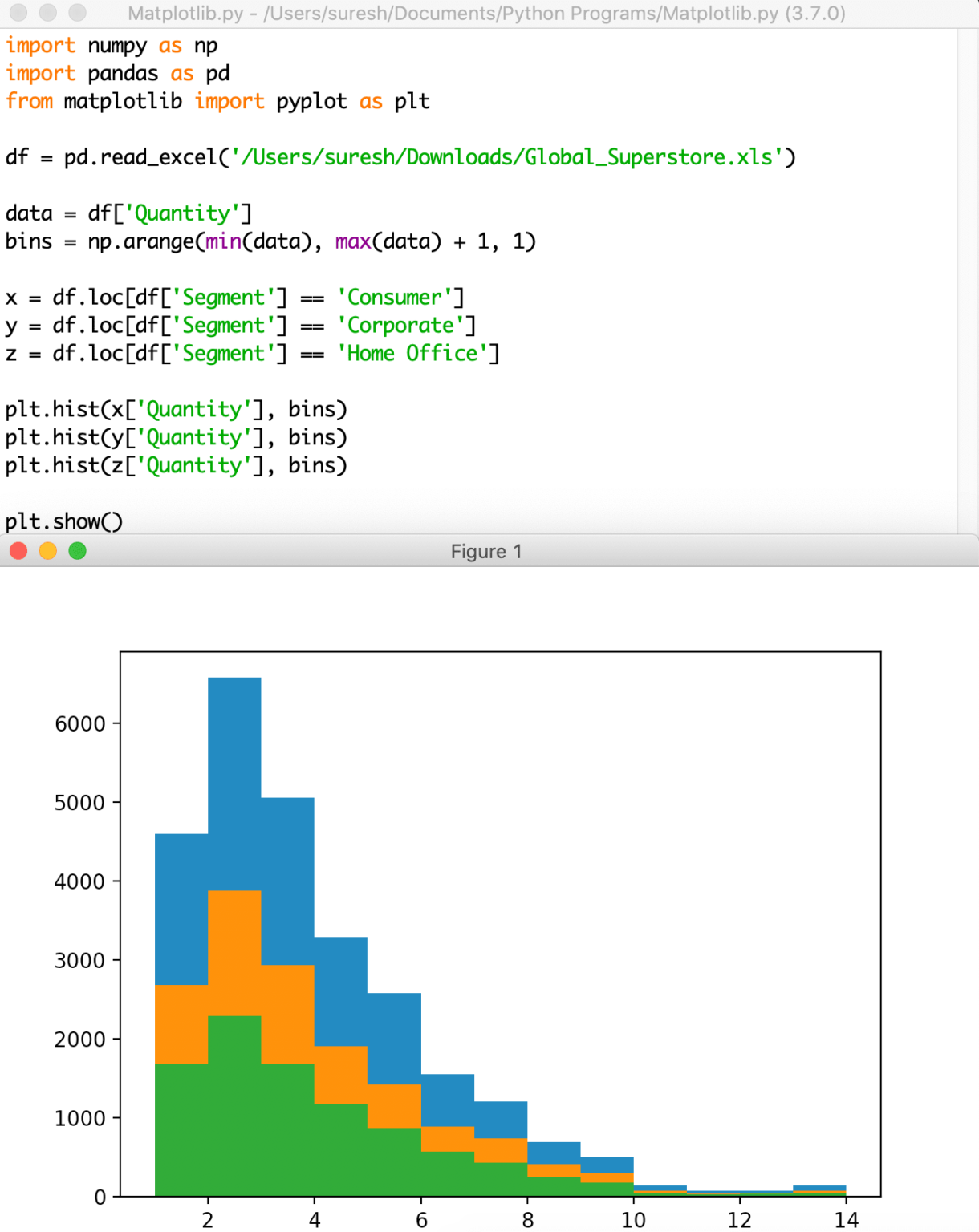
ylabel() adds an y-axis label to your plot xlabel() adds an x-axis label to your plot We can add axis titles using the following methods: This is part of the incredible flexibility that Matplotlib offers. Matplotlib handles the styling of axis labels in the same way that you learned above. Axis labels provide descriptive titles to your data to help your readers understand what your dad is communicating.
#Pyplot subplot histogram how to
In this section, you’ll learn how to add axis labels to your Matplotlib plot. In the next section, you’ll learn how to add and style axis labels in a Matplotlib plot. While this is an official way to add a subtitle to a Matplotlib plot, it does provide the option to visually represent a subtitle. Y = Īdding a subtitle to your Matplotlib plot Let’s see how we can use these parameters to style our plot: # Adding style to our plot's title The ones above represent the key parameters that we can use to control the styling. There are many, many more attributes that you can learn about in the official documentation. family= controls the font family of the font.fontweight= controls the the weight of the font.loc= controls the positioning of the text.


fontsize= controls the size of the font and accepts an integer or a string.title() method in order to style our text: Let’s take a look at the parameters we can pass into the. Matplotlib provides you with incredible flexibility to style your plot’s title in terms of size, style, and positioning (and many more). Changing Font Sizes and Positioning in Matplotlib Titles This is what you’ll learn in the next section. We can easily control the font styling, sizing, and positioning using Matplotlib. It is always advisable to check that your impressions of the distribution are consistent across different bin sizes.We can see that the title is applied with Matplotlib’s default values. But you should not be over-reliant on such automatic approaches, because they depend on particular assumptions about the structure of your data. By default, displot()/ histplot() choose a default bin size based on the variance of the data and the number of observations. The size of the bins is an important parameter, and using the wrong bin size can mislead by obscuring important features of the data or by creating apparent features out of random variability. For instance, we can see that the most common flipper length is about 195 mm, but the distribution appears bimodal, so this one number does not represent the data well. This plot immediately affords a few insights about the flipper_length_mm variable. displot ( penguins, x = "flipper_length_mm" ) A histogram is a bar plot where the axis representing the data variable is divided into a set of discrete bins and the count of observations falling within each bin is shown using the height of the corresponding bar:
#Pyplot subplot histogram code
This is the default approach in displot(), which uses the same underlying code as histplot(). Perhaps the most common approach to visualizing a distribution is the histogram. It is important to understand these factors so that you can choose the best approach for your particular aim. There are several different approaches to visualizing a distribution, and each has its relative advantages and drawbacks. They are grouped together within the figure-level displot(), jointplot(), and pairplot() functions. The axes-level functions are histplot(), kdeplot(), ecdfplot(), and rugplot().

The distributions module contains several functions designed to answer questions such as these. What range do the observations cover? What is their central tendency? Are they heavily skewed in one direction? Is there evidence for bimodality? Are there significant outliers? Do the answers to these questions vary across subsets defined by other variables? Techniques for distribution visualization can provide quick answers to many important questions. An early step in any effort to analyze or model data should be to understand how the variables are distributed.


 0 kommentar(er)
0 kommentar(er)
